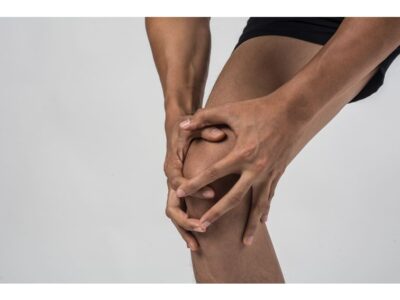10 most common knee injuries: Nowadays, the most common problem among adults and elderly people is knee pain. Daily activities such as walking, standing, running, bending, and lifting can lead to general wear and tear of the knee joint. Repeated stress on knee joints, injury, and aging can lead to knee pain. Arthritis, cartilage tears, and strained and sprained ligaments are some of the common problems associated with the knee. The 10 most common knee injuries include the following:
10 most common knee injuries
ACL injuries
These types of injuries are very common among athletes who play contact sports. It occurs when the joint in front of the knee is damaged. Symptoms include loud crying at the time of injury, swelling hours later, severe pain, and numbness in the knee. The ACL can be easily sprained, usually requiring rest, ice, and compression bandages, or in the worst case a complete tear. Damaged tendons require surgery to repair the damaged area.
Knee Fractures
There are many different types of bones in the knee, all of which can be broken as a result of a fall or injury to the knee. The patella, also known as the patella, is a bone that is prone to fractures because it sits above the knee joint. Treatment will vary depending on the type of fracture. A fracture that displaces the bones in the knee requires surgery to realign the bones and stabilize them. Even with mild fractures, you should wear a cast and keep the knee immobile while the bones heal.
Bursitis
Bursitis is a small bag of fluid that helps cushion and lubricate the knee joint. If the bursa becomes inflamed, a person may suffer from bursitis. This is usually caused by overuse of the knee, so it is often treated with rest. Sometimes, too much fluid can cause the knee to swell, and the patient may need to drink fluids.
Ruptured Tendons
Tendons can be torn by direct blows or violent movements. These muscles weaken with age, so older people who continue to exercise are more likely to break them. Muscle tears can cause a lot of pain and continue to cause problems if you continue to use the knee without treatment. The tear usually requires surgery to reattach, then the knee is fixed and physical therapy is completed.
Dislocation of the Knee
A dislocation occurs when the intact knee moves. Because the knee bones move out of alignment, knee pain can occur as a result of an injury or poor condition of the knee. Initially, treatment consisted of putting the knee back in place, immobilizing the leg for a few days, and taking pain medication. However, if severe fractures occur, surgery may be required to straighten the bones.
Tearing of Ligaments
Ligaments help hold the bones in place, but they can break if the knee is subjected to too much force from the side. These injuries usually occur in contact sports such as football or hockey.
Peripheral injuries are divided into 1, 2, and 3 injuries.
Grade 1 and 2 injuries are sprains that require rest, ice, and physical therapy to heal.
A third-degree injury occurs when the ligament is torn in two, and these tears require surgery to heal properly.
Tendonitis
Tendons are tough bands of tissue that connect the leg muscles to the knee bones. Overuse causes the tendons to become inflamed, causing a condition called patellar tendonitis. It is often referred to as “jumping knee” because it is common among athletes who spend a lot of time jumping. Knee pain usually begins before swelling and tenderness. Physical therapy and anti-inflammatory drugs are sufficient to treat many cases, but surgery may be required if scarring develops.
PCL injuries
A person can suffer a PCL injury when the knee bends during the injury. The hamstring is a joint that runs along the back of the knee. Treatments for a PCL injury are very similar to those used for an ACL injury. Most minor injuries can heal by just resting the knee, but more serious injuries may require treatment or surgery.
Torn Meniscus
The menisci are two pieces of cartilage that provide cushioning between the knee and the surrounding bones. They can tear in some vigorous sports, but it’s more common to thin and harden before tearing. As long as the knee is intact, a meniscal tear can be treated with rest and physical therapy, but if the tear is difficult to move or puts weight on the knee, you may need to have knee surgery to fix it.
Iliotibial Band Syndrome
The iliotibial band runs on the outside of the knee, so it can rub against the knee joint whenever you use the knee. Eventually, there will be a lot of wear and tear. This injury is more common among people who run long distances, but it can happen anytime the knee is used. The pain is usually mild at first but worsens if the person continues to use it. People with iliotibial band injury usually need to rest until the injury is fully healed.
Bottom Line
Diagnosing a knee injury or problem includes a medical examination and usually the use of a diagnostic procedure(s) such as an x-ray, MRI, CT scan, or arthroscopy. Both non-operative and surgical treatment options are available to treat knee pain and problems depending on the type and severity of the condition.

